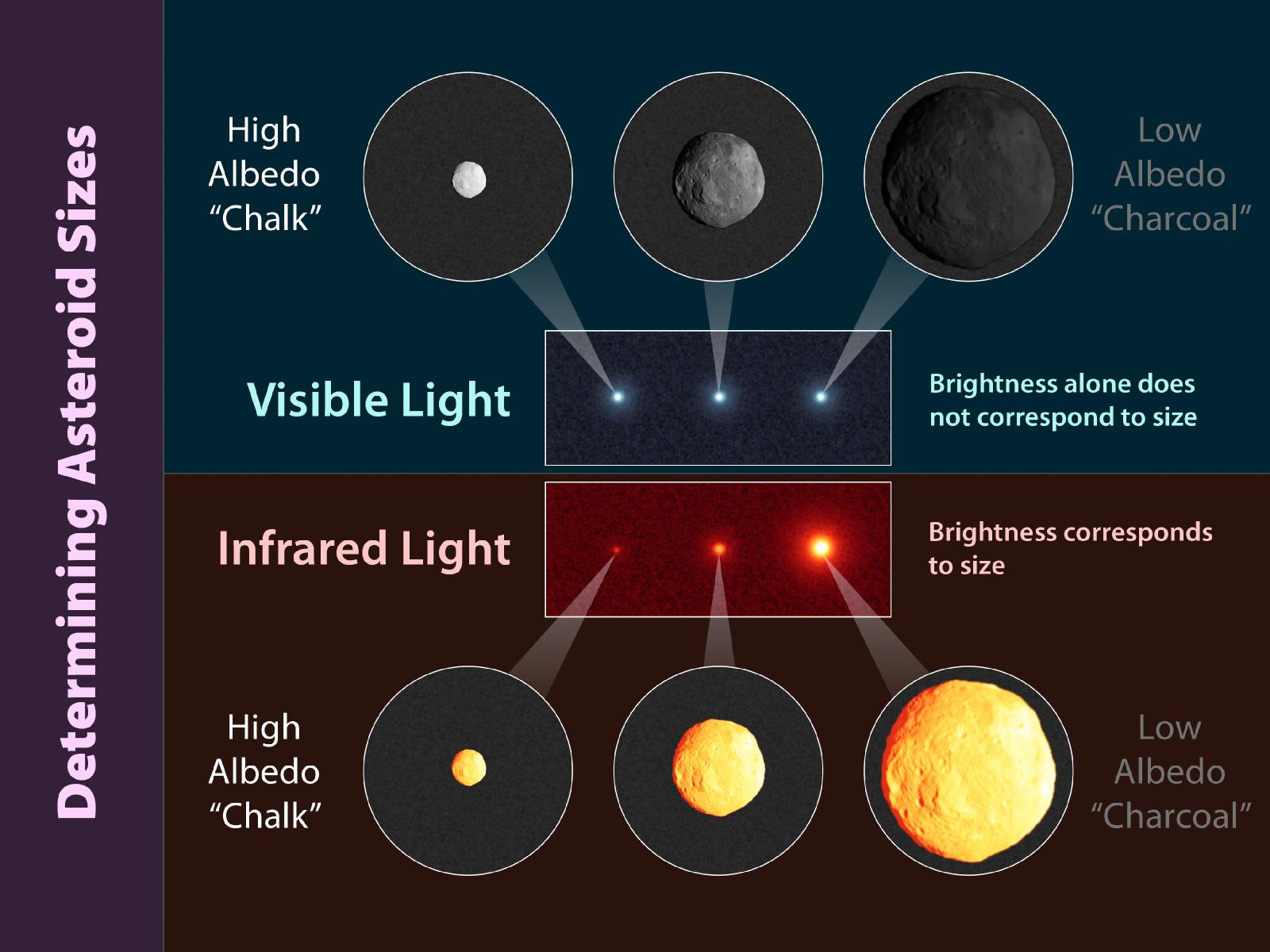Fewer Asteroids Lurk Near Earth Than Thought, NASA Telescope Finds

A NASA space telescope that mapped the entire sky has revealed that fewer potentially threatening asteroids are in orbits near Earth, space agency officials announced today (Sept. 29).
The discovery lowers the number of medium-size asteroids near Earth to 19,500 — nearly a 50 percent drop from the 35,000 space rocks initially estimated — and suggests that the threat to Earth by dangerous asteroids may be "somewhat less than previously thought," NASA officials said in a statement. There are still thousands more of these asteroids, which can be up to 3,300 feet wide, that remain to be found.
"Fewer does not mean none and there are still tens of thousands out there to find," study leader Amy Mainzer, principal investigator for NASA's NEOWISE project at the agency's Jet Propulsion Laboratory (JPL) in Pasadena, Calif. [Photos: Asteroids in Deep Space]
Scientists used NASA's Wide-field Infrared Survey Explorer (WISE), an infrared space telescope, to map the asteroid population near Earth and elsewhere in the solar system. By the end of the telescope's extended mission, called NEOWISE, last year, astronomers had found 90 percent of the largest asteroids near our planet, NASA scientists said.
The WISE space telescope mapped the entire sky twice between January 2010 and February 2011 during its mission, which was aimed at mapping near-Earth asteroids, brown dwarfs, galaxies and other deep space objects. For its near-Earth asteroid search, the space observatory scanned for space rocks that orbited within 120 million miles (195 million kilometers) of the sun. The Earth is about 93 million miles (150 million km) from the sun. [Video: Killer Asteroids, We're WISE to You Now]
The telescope's NEOWISE mission discovered more than 100,000 previously unknown asteroids in the asteroid belt between the orbits of Mars and Jupiter. It spotted 585 asteroids in orbits that brought them near Earth.
The WISE asteroid survey, which NASA says is the most accurate ever performed, also lowered the estimated number of giant asteroids — space rocks the size of a mountain — from 1,000 to 981, with about 911 of those already known, researchers said.
Breaking space news, the latest updates on rocket launches, skywatching events and more!
"The risk of a really large asteroid impacting the Earth before we could find and warn of it has been substantially reduced," said Tim Spahr, the director of the Minor Planet Center at the Harvard Smithsonian Center for Astrophysics in Cambridge, Mass.
NASA launched the $320 million WISE telescope in December 2009. It spent 14 months scanning the heavens in infrared light before NASA shut it down in February 2011.
Follow SPACE.com for the latest in space science and exploration news on Twitter @Spacedotcom and on Facebook.

Space.com is the premier source of space exploration, innovation and astronomy news, chronicling (and celebrating) humanity's ongoing expansion across the final frontier. Originally founded in 1999, Space.com is, and always has been, the passion of writers and editors who are space fans and also trained journalists. Our current news team consists of Editor-in-Chief Tariq Malik; Editor Hanneke Weitering, Senior Space Writer Mike Wall; Senior Writer Meghan Bartels; Senior Writer Chelsea Gohd, Senior Writer Tereza Pultarova and Staff Writer Alexander Cox, focusing on e-commerce. Senior Producer Steve Spaleta oversees our space videos, with Diana Whitcroft as our Social Media Editor.



